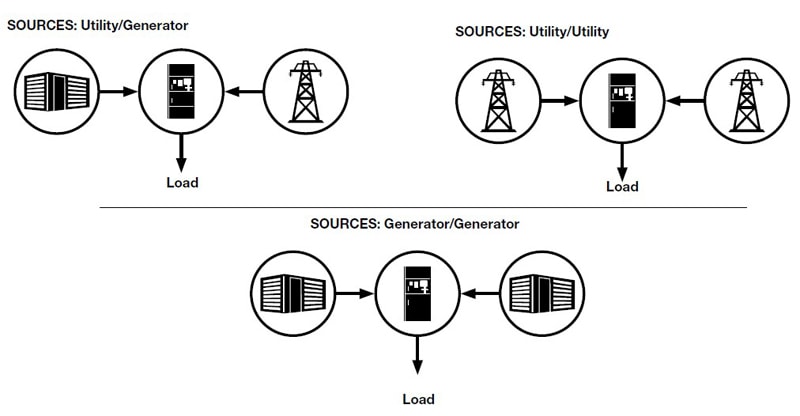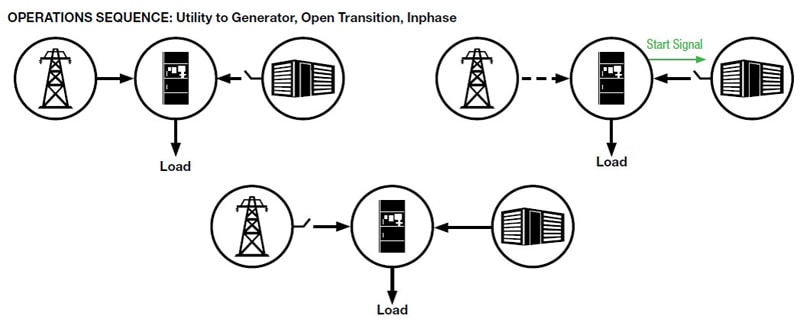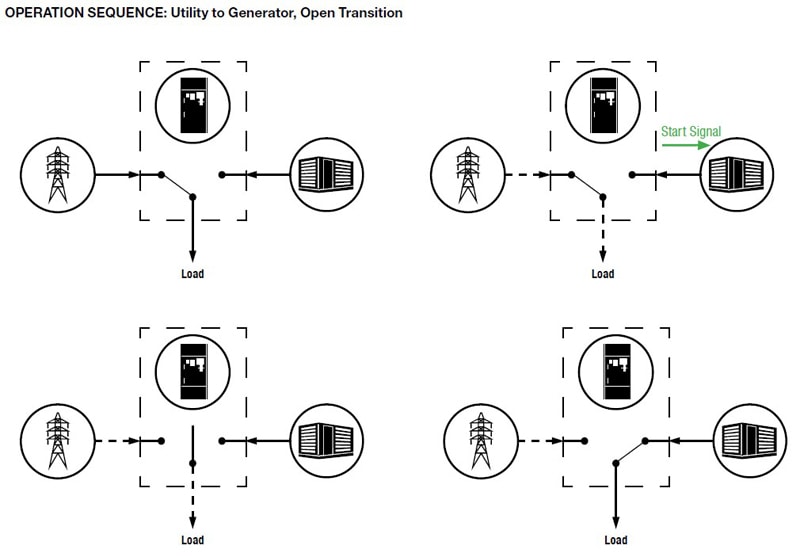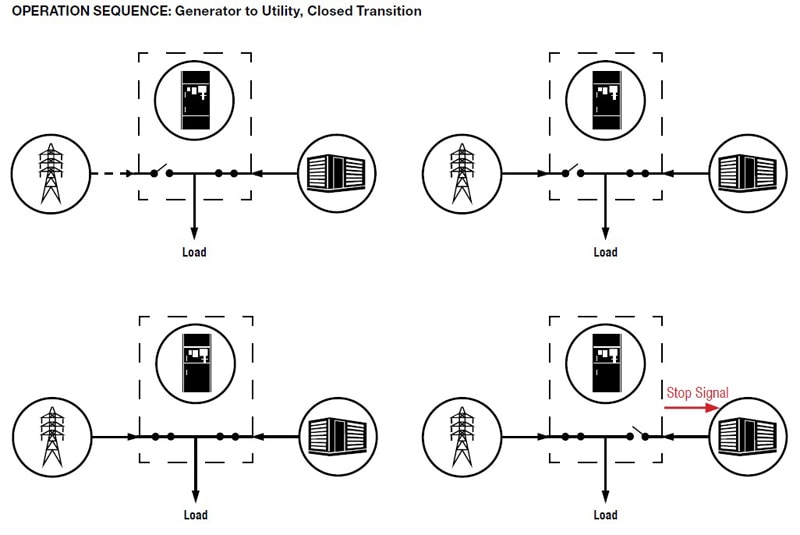July 2020 Articles:
- Hurricane Preparedness Guide 2020
- The Basics of Selecting Transfer Switches
- Hurricane Preparedness Fact Sheet
Hurricane Preparedness Guide 2020
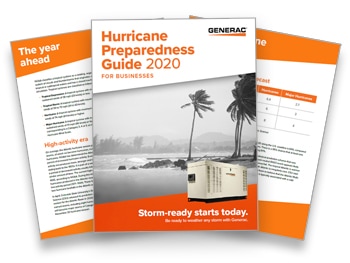 As global leaders in energy technology solutions, Generac aims to provide preparation information for the upcoming hurricane season and power outages associated with the weather events. The Atlantic basin has the largest year-to-year variability of any of the global tropical cyclone basins. It is important to make forecast predictions to bring attention to the hurricane problem and consequences associated with the storms.
As global leaders in energy technology solutions, Generac aims to provide preparation information for the upcoming hurricane season and power outages associated with the weather events. The Atlantic basin has the largest year-to-year variability of any of the global tropical cyclone basins. It is important to make forecast predictions to bring attention to the hurricane problem and consequences associated with the storms.
Generac’s mission is to provide peace of mind when power is out or unreliable. With the growth of intense hurricanes in the Atlantic, people may feel a sense of fear and uncertainty during unprecedented times. Generac works to give every person and family the information needed to help prepare themselves, their homes and their families for when life is disrupted by power outages.
Our hurricane survival guide has all the information you need to know about the upcoming 2020 storm season.
The Basics of Selecting Transfer Switches
BY Nikhil Nagpal and Liz Burant, Product Management Transfer Switches at Generac Power Systems
INTRODUCTION

Since it is the transfer switch that serves as a link to either power source, it can be considered one of the most critical links of a backup power system, as it is not just monitoring the sources, but is also making the critical decision of when to switch and which source it is to be connected to.
ULTRA-LOW SULFUR DIESEL
Ultra-Low Sulfur Diesel (ULSD) has only 15 parts per million (ppm) sulfur. This is a drastic decrease in sulfur as it used to be 500 ppm and in some cases 1000 ppm. ULSD is better for the environment as it reduces emissions; however, it is not solution for engines from 2007 and older. These changes to modern diesel fuel is inherently unstable and the quality degrades over time. The National Fire Protection Association (NFPA) says if ULSD is held for longer than a period of 6 months, the product could deteriorate in quality. If kept clean and dry, diesel fuel can be stored 6 months to 1 year without significant quality degradation. At the 12-month mark, it is important for the fuel to be polished (filtration and water removal) or replaced.
The transfer switch controller determines if the primary source is good by checking the voltage and frequency of that source. When the control senses either the loss of the primary source and/or a change in voltage and/or frequency beyond a certain limit, it then immediately checks on the secondary source to make sure it is safe to transfer the loads on to the secondary source. In the case of the secondary source being a generator, it is the transfer switch that instructs the backup generator to start by sending a start signal to the generator control. The next step for the switch is to determine the correct time to transfer the load to ensure smooth and safe transition. All of this happens in a relatively short period of time, which makes it even more important that the appropriate switch is selected for the particular application.
There are many things one needs to keep in mind while selecting a transfer switch, some of which we will discuss in this paper.
DETERMINING THE SYSTEM APPLICATION
The National Electrical Code (NEC) categorizes backup power systems in four different categories:
- Emergency Systems: NEC article 700 describes these systems as critical to life safety, which means the application requires backup power to loads that are designed to protect human life like egress lighting, fire pumps, elevators, ventilation and communication systems. Most common facilities for this application includes hospitals, businesses, etc.
- Legally Required Systems: Legally required systems are covered under NEC article 701, where it defines these applications, or loads, as what may be deemed by an authority having jurisdiction as necessary for prolonged outage. Its purpose is to provide power for critical heating, refrigeration, communication, ventilation, smoke removal, sewage disposal and lighting functions that could create hazards or prevent rescue operations, such as fire-fighting if power was lost. A recent example of such application would be the need for nursing homes to have backup power for air conditioning in Florida.
- Critical Operations Power Systems: Covered by NEC 708, it includes general power systems, HVAC, fire alarm, security and communications systems that are in vital facilities that, if denied power, could impact national security, the economy, or public safety. Most of these applications include DCOA (Designated Critical Operation Area) in a government building.
- Optional Standby Systems: Falling under NEC 702, these systems are not required by any government agency, but are used to supply power to systems that the site owner or operator deems important. These are typically found in commercial buildings, farms, and residential homes.
UNDERSTANDING THE TYPES OF TRANSFER SWITCHES
Once an engineer has categorized the loads of the facility into the above mentioned categories as per the NEC, the next step is to determine what sort of transfer switch is best suited to meet the needs of that system while meeting all codes and standards related to the application.
There are different types of transfer switches offered by manufacturers to meet the different application and code needs. These types of transfer switches include:
Manual Transfer Switch: A manual transfer switch is one that requires a human interface to transition from one source to the other. These types of switches are ideal for non-critical loads and usually have a mechanical lever or an electrical mean for the person to operate this switch in the event of a power loss.
Automatic Transfer Switch: An automatic transfer switch (ATS), is a switch that makes use of electronics to continuously monitor the available sources and determine which source is ideal for providing power to the loads. Since these types of switches are equipped with its own control, it also automatically transitions load from one source to the other hence eliminating the need of a person to be present to perform a transfer.
Service Entrance Rated Transfer Switch: A service entrance switch is defined as a switch that also houses the upstream utility/service breaker within the switch. In an emergency situation, the first responders can trip the breaker the utility power to the building ensuring that there is no live power within the building from the utility source, making it safe for them to enter the building. In a large facility with more than one transfer switch, this is usually the most upstream switch closest to the utility source.
In many cases, especially retrofits, it is more convenient to install an ATS with a service disconnect incorporated into the switch. These type switches may make the installation quicker and easier resulting in lower installation costs. They also take up less room since there is one piece of equipment to install rather than two (a transfer switch and a service disconnect device).
Bypass Isolation Transfer Switch: In applications where even a momentary loss of power becomes critical for life and/or safety, such as hospitals or data centers or any emergency loads, the selection of bypass isolation switches may be necessary. A bypass isolation transfer switch has more than one transfer switch scheme, so that when the main transfer switch is being serviced it can be isolated from the power supply and transferred to the second transfer switch, which will now act as the switching means in case of a power loss, until the main transfer switch has been restored as the primary switch.
Once an engineer/customer has decided what type of switch will be ideal for the application, the next step is to understand which switch transition type would work best for the application.
WAYS TRANSFER SWITCHES TRANSITION LOADS
There are several ways in which the load can be transferred from one power source to the other. One needs to understand the type of loads (resistive or inductive) and the critical nature of these loads to determine what transition type to choose from when selecting a switch.
There are essentially four different types of transitions one can choose from:
Open Transition Transfer Switch: An open transition switch is also referred to as a break-before-make switch, as it breaks from the first source before making the connection to the other source, as shown in the diagram below. The loads lose power for a certain duration equal to the transition time.
Note: A manual transfer switch will always be an open transition switch due to the very nature of its design; hence, the transition types are more relevant in case of an automatic switch rather than a manual transfer switch.
Open Inphase Transition: An open inphase transition switch monitors both sources and does not initiate the transition until both sources are inphase. The switch then transitions quickly so that the loads do not get out of phase with the source. In the event of an unexpected power loss on the normal source, an inphase transition does not occur when transitioning to the emergency backup source. This occurs only when both sources are available, most commonly only on the return transfer from the emergency source to the normal source.
Open Delayed Transition: Also known as a time delay neutral or programmed transition switch. This three-position switch has a neutral position that allows the voltage on the load to decay, typically caused by motor loads, before connecting it to the other live source. The neutral position can also be used to shed the load connected to the transfer switch. The amount of time in the neutral position can be programmed in the controller.
Closed Transition Transfer Switch: A closed transition switch is referred to as a make-before-break switch, as it makes the connection to the alternate source first before disconnecting from the already connected source. Since the switch is connected to both sources at the time of transition, the loads do not experience any power loss which makes this switch ideal for emergency loads. The overlap period during which both sources are simultaneously connected usually last no more than 100 milliseconds to comply with UL 1008 requirements. The amount of time that both sources are closed to the load is typically mandated by the utility company and is adjustable to have it less than 100ms. This is sometimes also referred to as a momentary closed transition.
TYPES OF ENCLOSURES
During the selection of a switch, it is also important to understand where the switch is going to be installed and therefore what environmental conditions it will face. If the switch is going to be installed indoors, that would need different environmental protections than a switch located outdoors. To accommodate installation locations and their unique environmental conditions, there are multiple enclosure designs to consider:
A Type 1 enclosure is generally defined as an indoor switch. This type of enclosure protects personnel from touching hazardous parts and protects the internal parts from large debris.
Type 12 is also an indoor switch, which does prevent damage due to dripping or light splashing of water. The Type 12 enclosure also prevent some aspects of dust getting into the enclosures. This type of enclosure is typically found in industrial machining and manufacturing environments to protect against splashing water or large dust and debris intrusion.
Type 3R enclosures are rainproof enclosures. Water that enters the enclosure can escape via holes in the bottom of the unit. These switch enclosures are mostly used in outdoor applications where there is little risk of flooding. They are also used in indoor applications where there might be any chance of water exposure to the switch (like sprinkler systems, etc.).
A Type 4 enclosure is a weatherproof enclosure, sealed from outdoor conditions. A Type 4X enclosure is one-step above a Type 4 enclosure as it is made out of stainless steel and it prevents corrosion, which is especially needed in coastal regions where you have a lot of humidity and salt-water spray. Both Type 4 and 4X provide a degree of protection against splashing water or directed water and are undamaged by the formation of ice on the outside of the enclosure.
CONCLUSION
When choosing a system, you should work with a consulting and/or specifying engineer to consider all possible power transfer options to meet system performance and cost requirements, as well as your local Generac Industrial Power Distributor. The NEC requires transfer switches to meet certain safety standards, which you can only confidently achieve with professional installation. It is also important to know how to properly size your transfer switch to match the power requirements of the loads and the capacity of the generator(s). This prevents the system from overloading when the generator kicks on, something that could damage the very appliances and electronics you are hoping to use while utility services are down.
ABOUT THE AUTHOR
Nikhil Nagpal joined Generac as a Product Manager in 2018. Nagpal is responsible for the development of our transfer switch product strategy. He has held various engineering positions within the power generation industry over the past ten years, most recently as a Global Product Manager for Transfer Switch Products. He received an M.S. in Electrical Engineering from University of Texas – Arlington and holds certifications in both Product Management and Project Management.
Liz Burant is a Product Management Specialist at Generac Power Systems. She is a graduate of the University of Wisconsin- Platteville with a bachelor’s degree in Industrial Technology Management – Building Construction Management. Burant has been with Generac Power Systems since 2011, and is currently focused on supporting industrial and residential transfer switch product development, and industrial controls development.
Hurricane Preparedness Factsheet
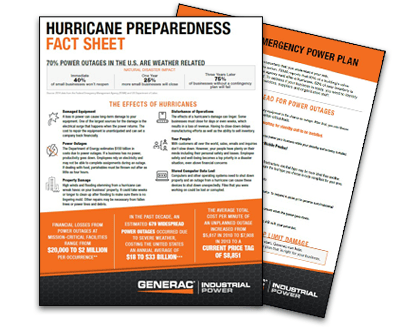
Power outages due to natural disasters can cause businesses to fall victim to decreased productivity, increased liability, damaged equipment and lost customers. If your organization is vulnerable to hurricanes or natural disasters, it is important that you understand your risk, develop a preparedness and mitigation plan and take action.
See the effects nautrual disasters really have on your business and how they can be prevented by downloading the Hurricane Preparedness Fact Sheet.
